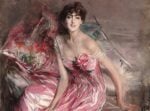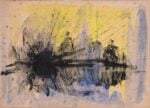Fabio Gigone – Tell me of Louis
.jpg)
Tell me of Louis / Raccontami di Luigi è la seconda mostra curata da Fabio Gigone e legata alla sua ricerca in storia dell’architettura.
Comunicato stampa
Tell me of Louis is the second exhibition born from the ongoing Ph.D. research in history of architecture titled “States of Proximity: Privacy under Louis XIV in Versailles, 1682-1715” by Fabio Gigone at the Centre of Privacy Studies - University of Copenhagen and The Royal Danish Academy of Fine Arts, Schools of Architecture, Design, and Conservation (KADK).
The overall aim is to investigate how the notion of privacy was historically rooted within the Early Modern French context; particularly, how this concept was introduced as regulator and commodity within the court social relationships established by Louis XIV in his brand new centre of power.
The exhibition reconstructs the dispersed visual body displayed in the public and “private” [particulières] rooms of Louis XIV in Versailles, retrieving the works from the textual inventories by André Félibien [1677], Charles Le Brun [1683], Piganiol de La Force [1707] and Nicolas Bailly [1709-1710]. These inventories document the revitalised tradition of art collection in France as it happened under Louis XIV, following its decreased interest occurred in the previous hundred years. The inventories can be interpreted also as a rehearsal that preceded the blossoming of the ekphrasis within the French literature, where the authority of the words competed with the possibilities given by the visual realms, going from painting to architecture.
Tell me of Louis
Curatorship and text
Fabio Gigone
Exhibition Design
OFFICE U67 ApS (Angela Gigliotti, Fabio Gigone)
Collaborators
Mariachiara D'Onghia, Marco Felicioni, Silvia Carrara, Luciana Faustini, Francesco Rambelli
Sponsored by
Danish National Research Foundation (DNRF)
The Royal Danish Academy of Fine Arts, School of Architecture (KADK)
The Centre for Privacy Studies, Accademia di Danimarca
Fabio Gigone (Udine, 10/02/1978) is an architect and researcher. He graduated in Architecture at the IUAV Venice (2006). Since then, he practiced as an architect within Salottobuono (co-founder), and as editorialist and columnist of architectural specialised magazines such as Abitare, Domus Magazine and San Rocco Magazine (co-founder). In 2013 he moved to Scandinavia and kicked off the research-based architectural practice OFFICE U67 ApS with Angela Gigliotti (www.office-u67.net). Beyond practice, he has been fervently involved in academic activities: External Lecturer at IUAV Venice, Italy (2009, 2010); External Lecturer at ISIA Urbino, Italy (2009-2012); External Lecturer at NMBU, Ås, Norway (2014); Associate Professor at NMBU University in Ås, Norway (2015-18) and Unit Faculty at AAA, School of Architecture of Aarhus, Denmark (2015-18). In 2018-22 he has been awarded as Ph.D. fellow at The Royal Danish Academy of Fine Arts Schools of Architecture, Design and Conservation (KADK) in Copenhagen, affiliated to the Excellence Centre for Privacy Studies at the University of Copenhagen where he is conducting the research project “States of Proximity: Privacy under Louis XIV in Versailles, 1682-1715”. Along with his Ph.D. project, he is currently resident at the Accademia di Danimarca – Det Danske Institut i Rom while conducting some primary sources investigation at the Archivio Secreto Vaticano. In the same frame in Spring 2020, he will be Academic Guest at the Chair of the Institut für Geschichte und Theorie der Architektur at ETH Zürich.
ell me of Louis / Raccontami di Luigi è la seconda mostra curata da Fabio Gigone e legata alla sua ricerca in storia dell’architettura intitolata States of Proximity: Privacy under Louis XIV in Versailles, 1682-1715 condotta all’interno del Centre of Privacy Studies - University of Copenhagen e dalla Royal Danish Academy of Fine Arts, Schools of Architecture, Design, and Conservation (KADK).
La ricerca si occupa di come la privacy si sia storicamente radicata nel contesto francese durante il periodo Early Modern; in particolare, come questo concetto sia stato introdotto come regolatore e commodity all'interno delle relazioni sociali di corte stabilite da Luigi XIV a Versailles.
La privacy è sicuramente un paradigma moderno che oggi viene utilizzato per definire quella particolare soglia che consente ad una sfera “propria” di essere eventualmente comunicata, o esclusa, alla percezione altrui.
Sebbene il concetto di privacy sia difficilmente collocabile storicamente, nonostante l’abbondanza di documenti disponibili, esso funge da “segnatura” nella definizione e qualificazione del concetto di vita, durante un periodo storico —l’Early Modern— durante il quale una nuova soggettività stava prendendo piede.
Considerando il caso di Luigi XIV, é concretamente possibile distinguere una vita privata da una pubblica? E quali sono gli attributi peculiari di questa distinzione?
La mostra ricostruisce il corpo visivo esposto nelle sale pubbliche e “private” [particulières] di Luigi XIV a Versailles, estratte dagli inventari della collezione reale redatti da André Félibien [1677], Charles Le Brun [1683], Piganiol de La Force [1707] e Nicolas Bailly [1709-1710]. Questi inventari documentano come il collezionismo d’arte in Francia, a seguito dello scarso interesse dimostrato nei cento anni precedenti, fu riscoperto da Luigi XIV. Gli inventari vengono qui interpretati come una testimonianza del momento che ha preceduto la fioritura dell’ekphrasis all'interno della letteratura francese, dove l'autorità data alla parola si trovò a competere con le possibilità offerte dagli apparati visivi, dalla pittura fino all'architettura.
Tell me of Louis
Curatela e testo
Fabio Gigone
Exhibition Design
OFFICE U67 ApS (Angela Gigliotti, Fabio Gigone)
Collaboratori
Mariachiara D'Onghia, Marco Felicioni, Silvia Carrara, Luciana Faustini, Francesco Rambelli
Sponsored by
Danish National Research Foundation (DNRF)
The Royal Danish Academy of Fine Arts, School of Architecture (KADK)
The Centre for Privacy Studies, Accademia di Danimarca
Fabio Gigone (Udine, 10/02/1978) é architetto e ricercatore, laureato in architettura allo IUAV di Venezia (2006). Fabio é stato co-fondatore di Salottobuono, direttore artistico e columnist di magazines di architettura come Abitare, Domus e San Rocco, di cui é co-fondatore, mentre nel 2013 in Scandinavia fonda —assieme ad Angela Gigliotti— lo studio di architettura e ricerca OFFICE U67 ApS (www.office-u67.net). Oltre alla ricerca, Fabio é stato coinvolto in diverse attività accademiche: External Lecturer allo IUAV di Venezia (2009, 2010); External Lecturer all’ ISIA di Urbino (2009-2012); External Lecturer (2014) e Associate Professor al NMBU in Ås, Norway (2015-18); e Unit Faculty all’ AAA, School of Architecture of Aarhus, Danimarca (2015-18). Nel 2018-22, Fabio ha ottenuto una borsa di ricerca Ph.D. alla The Royal Danish Academy of Fine Arts Schools of Architecture, Design and Conservation (KADK) di Copenhagen, affiliato al Centre for Privacy Studies della University of Copenhagen, dove conduce il progetto di ricerca “States of Proximity: Privacy under Louis XIV in Versailles, 1682-1715”. In connessione con il dottorato, Fabio é attualmente residente all’Accademia di Danimarca - Det Danske Institut i Rom, dove sta conducendo una ricerca di archivio sulla corrispondenza dei nunzi apostolici residenti a Parigi nel XVII sec. presso l’Archivio Segreto Vaticano. Nello stesso contesto, Fabio sará Academic Guest alla Chair dell’Institut für Geschichte und Theorie der Architektur all’ETH Zürich.
CAMPO is a space to debate, study and celebrate architecture, born in Rome out of the collaboration between Gianfranco Bombaci, Matteo Costanzo, Luca Galofaro e Davide Sacconi.
CAMPO invites researchers, professionals and students to expose projects, experiments and researches that challenge the current understanding of the city, and to collaborate in the investigation of the potential and the limits of architecture as a form of collective production and common knowledge.



